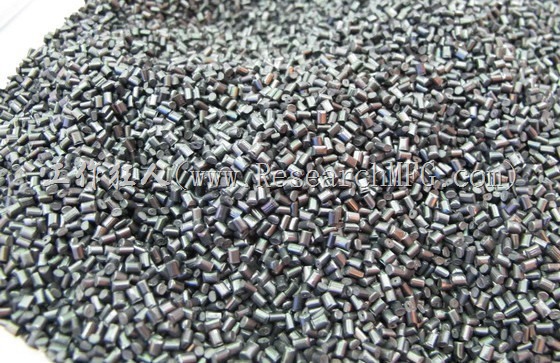
It’s an open secret in the plastic injection molding industry that re-grind resin is often added during injection. Some manufacturers even claim that, given the current competitive environment and cost-cutting pressures, it’s impossible to make a profit without using some re-grind resin. Plus, they argue it promotes recycling and aligns with today’s emphasis on environmental sustainability. However, from a quality perspective, adding re-grind resin introduces risks of reduced strength and increased brittleness in the structure of plastic products.
To control the use of re-grind resin effectively, the best approach is to tackle the issue from two angles. First, clearly specify in the design specifications that the use of re-grind resin is prohibited. Second, conduct unannounced audits of the plastic factory’s injection process. If you can also monitor the MFI (Melt Flow Index) of every batch of incoming plastic material and periodically test the MFI of finished products, you can ensure over 99% quality reliability for plastic products.
If you’re not familiar with MFI, check out [Understanding Melt Flow Index (MFI) for Quality Control in Plastic Injection Molding] for more details.
If you’re wondering why MFI is related to re-grind resin, take a look at [Why Re-grind Resin in Plastic Injection Molding Causes Degradation and Weakens Strength] for further insights.
So, as a quality auditor for a plastic factory, how can you detect if re-grind resin is being secretly used? Here are some practical methods from Workingbear:
1. Conduct Random Inspections at the Factory
Make unannounced visits to the injection molding factory and perform spot checks. Directly grab a handful of resin from the drying hopper or material hopper for inspection. Normally, virgin resin is made of uniform cylindrical pellets with smooth, rounded surfaces, apart from the cut edges. In contrast, re-grind resin is typically sourced from scrap material such as runner heads or defective products, which are crushed into irregular shapes. The difference is easy to identify.
Although it’s impossible to monitor the factory 24/7, occasional random inspections combined with heavy penalties when violations are found can act as a strong deterrent.
If the re-grind resin has been re-pelletized, it becomes harder to detect. However, subtle differences can still reveal clues. Re-pelletized re-grind resin might vary slightly in size compared to virgin resin. Pay close attention to the resin’s appearance, and if anything seems off, question the factory about why the resin size differs. This can help uncover any suspicious practices.
2. Test MFI of Resin During Incoming Inspection
Another issue to watch out for is that dyeing factories and compounding factories often add re-grind resin, which is difficult to detect by visual inspection. In such cases, it’s best to test the MFI (Melt Flow Index) of the incoming resin as the first quality control checkpoint. The second checkpoint could involve testing the impact strength to ensure it meets specifications. You might also consider using a fixed batch of runner waste or sprue waste to perform bend or impact tests for comparison.
3. Track Resin Inflow, Finished Products, and Material Flow
You can also monitor inconsistencies in the plastic factory’s resin input and finished product output. Track the flow of runner scraps to detect discrepancies. (Resin inflow = Resin inventory + Finished product output + Runner scraps).
4. Special Inspection for Black Resin
Black resin products are more likely to contain re-grind resin since the black color can cover up any color inconsistencies. Special sampling and testing of black resin are recommended.
5. Minimize the Use of Re-grind Resin
If the re-grind resin comes from the original material’s runner scraps, theoretically, there is less concern about color inconsistencies. However, there is still a risk of degradation. To avoid mixing substandard materials, it’s best to disallow the use of re-grind resin altogether. Even if the resin comes from the same batch of material, it should be avoided unless the product design has specifically accounted for plastic degradation.
6. Perform Destructive Bend Tests
Products containing re-grind resin often have weaker structural integrity and are more brittle. Conduct destructive tests by forcefully breaking the product. If you hear a distinct “snap” sound and see a large amount of whitening at the fracture, this may indicate the presence of re-grind resin. However, this test should only be used as a reference.
7. Test the MFI of Finished Products
Test the MFI of the finished products. For more details, refer to the article [The Relationship Between MFI and Re-grind Resin/Recycle Resin].
Related Posts:







Leave a Reply